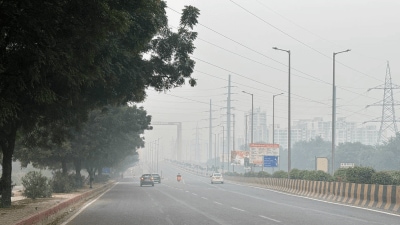Small money,net gain
An online microfinance platform identifies the needy and lets lenders decide who and how much to fund
On a weekday morning,in a pristine white office in JP Nagar,south Bangalore,half-a-dozen youngsters are hunched over their laptops. They are crunching numbersof lives touched,of hopes nurtured,and of the money they themselves made in the process. Milaap,an online microfinance platform incubated last year at the Indian Institute of Management,Bangalore,is one of those rare organisations with the energy of a tech start-up and the moral acuity of an NGO.
A proposition born out of Anoj Viswanathans desire to give flexible and affordable loans to the enterprising poor and Sourabh Sharmas business acumen,Milaap stepped gingerly into the forbidding world of microcredit in July 2010. The duo,engineering graduates from the National University of Singapore,decided they would focus on seven key areaseducation,sanitation,enterprise development,water,energy,sustainable farming and healthcare,roughly in that order.
Microfinance rates are normally high,up to 26 per cent,and loans have traditionally been inflexible. We thought we could tackle the challenge of accessing low-cost capital with a transparent,online portal, says Viswanathan,24,who has behind him a stint with SKS Microfinance that involved rigorous field work in northern Orissa. Milaap has raised
Rs 1 crore within a year of its existence from about 800 lenders,and is looking to scale up this year. Our target for this year is Rs 10 crore. Hopefully,well break even soon, says 29-year-old Sharma,with resolve.
Listed on their website are dozens of potential borrowers: from a widow in Musiri,Tamil Nadu,who needs Rs 10,000 to build a toilet for her family of six,to a tailor from Purba Raghunathpur,West Bengal,who wants to install solar lighting,to a 19-year-old from Bagalkot,Karnataka,who must undergo vocational training to be employable. There are pictures accompanying each loan request and a tab that shows how much of the loan amount has already been funded. Lenders can pick who and how much to fundfrom Rs 500 to several lakhs. Over 700 loans have been disbursed this way. Hearteningly,75 per cent of lenders have repeatedly ploughed their money back into the system,says Viswanathan.
Milaap is not just a lending company. It seeks to ensure that its loans are life-changing. To this effect,Milaap works extensively with four partners straddling four areasvocational training,energy,entrepreneurship and wateracross Karnataka,Tamil Nadu,Maharashtra and West Bengal. The partners were handpicked with care. We have rigorous checks in place: for instance,we require that the partner NGO should have been in existence for at least five years and should serve at least 5,000 households. We did a small pilot with each partner before we went the whole hog, Viswanathan says.
GRAVITY,which stands for Grameen Koota and Vidya Poshak Institute for Training Youth,is one such partner that works in Karnataka to train youth in employable vocations like retail,banking and hospitality,and ensures 100 per cent placement. Sharma plays a short video that tells the story of Heena,a small-town girl who would have been married off had it not been for a Milaap-enabled educational loan that got her a job at a Café Coffee Day outlet. Education loans often resonate with urban lenders,but we also see great scale in loans for small business,water and sanitation, says Viswanathan. It is important for us not to get swayed by emotion and to keep scalability in mind.
The loans come with an interest of 12 to 17 per cent,of which 8 per cent goes to Milaap and the rest to the partner,who is responsible for running creditworthiness checks before recommending loan applicants. So far,no one has defaulted and payments have always arrived on time,says Viswanathan. When we send out emails telling lenders that their loan has been repaid,many of them are surprised. I guess they have written it off in their minds as charity, says Sharma. We have every reason to believe that this model will be a great fit in the corporate sector. Most companies that have corporate social responsibility budgets would be glad to loan instead of donate.
Theres another reason loans work better than charity,Viswanathan says. He recently visited a village in Andhra Pradesh where government-built common toilets were being used as store rooms. One reason is that the people were not consulted and the toilets were built at a distance from their homes. But most importantly,ownership is the biggest motivating factor. When you have taken a loan to build a toilet and you are paying for it over several months,you will make good use of the facility, he says.
How do they measure the way their loans have bettered the lives of borrowers? Impact evaluation is the cornerstone of microfinance and Milaap is methodical about generating periodic quantitative reports that are then sent to lenders. The water and sanitation report for the last year,for instance,says that in five months of its operation,Milaap improved the lives of 1,510 people by financing 335 facilities with a total disbursement of
Rs 26.36 lakh. It plans to fund another 1,500 facilities by June 2012 to get completely defecation-free clustersan initiative that inspired Peixin Li,a student from the National University of Singapore who interned with Milaap late last year,to raise funds online to build toilets in rural Tamil Nadu.
Ultimately,few things give you the satisfaction that you get from seeing someone achieve a 4x increase in their income thanks to a small loan you gave or helping a family lead a life of dignity by building a toilet, says Viswanathan.



- 01
- 02
- 03
- 04
- 05




























